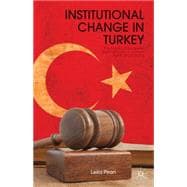This book explores the domestic reasons behind police reform in Turkey in the aftermath of the 1980 military coup. Although the role of the European Union on democratization and human rights should not be undermined, the EU driver only began to influence police reform after1999. Field research including interviews and survey research results reveal a consistent level of commitment among officers and their superiors to police reform. In contrast, interviews with civil society actors, legal experts, and political party deputies illuminate the complexity of implementing the EU's democratic criteria because of the ideological, historical, and structural hurdles unique to Turkey.








